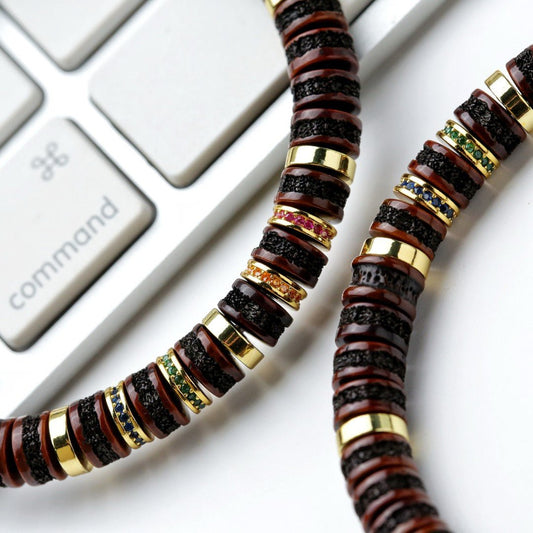
Amid the sophisticated tapestry within Himalayan sacred teachings lie two compelling artifacts: the detailed thangka and symbolic bodhi ornament. Each, in its own unique way, serves as a conduit to spiritual enlightenment. The thangka, an elaborate depiction, features deities, cosmic designs, or scriptural scenes, supporting mindfulness exercises.
Yet, the bodhi bead, often crafted from fine gems, hardwood, seeds, or osseous tissue, is a tangible reminder of Buddha's realization under the bodhi tree. Clutching the beads in contemplation anchors consciousness.
- Simultaneously, the thangka and the bodhi bead represent the connection of beauty and piety. They offer a tangible link to the age-old knowledge of Tibetan Buddhism.
Camel Bone Whispers
Spanning bygone centuries, ancient treasures whisper tales regarding a world long forgotten. These are not decorated objects belonging to suppressed empires, but simple camel bones sculpted with inscriptions that retain the unknowns of a bygone cycle. Every fragment whispers the echo derived from a life lived, a journey followed, and a connection to the old wisdom of which surrounds us all.
- These fragments
- Tokens
- Function as
Understanding the Iconography of Thangka Creations
Tangkas are radiant paintings on canvas, meticulously crafted by Tibetan artists to depict exalted figures and scenes from Buddhist literature. Each detail within a thangka is laden with importance, forming a complex tapestry of visual narratives that guide the viewer on a reflective journey. The tones used in thangkas are not merely aesthetic choices but carry profound connotations, reflecting different aspects of the Buddhist teachings. From the solemn figures to the intricate motifs, thangkas offer a insight into the rich world of Tibetan Buddhism, inviting us to ruminate upon its understanding.
- Established thangka art often depicts key Buddhist figures such as Buddha Shakyamuni, Bodhisattvas like Avalokiteshvara and Manjushri, and enlightened beings from various factions of Tibetan Buddhism.
- Across these representations lies a wealth of expertise that can be decoded by those who analyze the symbolic language of thangkas.
Tathagata's Path to Enlightenment: Embodied in Beads and Bone
Upon the winding way to nirvana, the Buddha wielded insignia imbued with profound value. All bead and bone held within them the fundamentals of his transcendent vision, revealing glimpses into the matrix of reality. By way of their profile, the Buddha expressed profound insights that overcome the realm of material perception.
From his meditation beads, crafted from exotic materials, issued vibrations that corresponded with the deepest waves within. The bone of a sentient, meticulously transformed into relics, served as tangible guides of the impermanence basic to all entities.
Thangkas: Windows into Himalayan Spirituality
Thangkas vibrant paintings on cloth serve as strong representations of Himalayan spirituality. These intricate works of art, meticulously created with finest brushstrokes, depict a vast array consisting of Buddhist deities, mandalas, and scenes from holy scriptures. Each thangka is a spiritual map for meditation and contemplation, offering wisdom into the subtle teachings of Buddhism.
- They are often used in ritual ceremonies in the context of
- transcending states of spiritual insight.
- Thangkas present not merely decorative artefacts but rather windows into the rich and engaging world of Himalayan spiritual traditions.
The Essence of Bodhi Beads: Cultivating Mindfulness and Compassion
Each pearl on a bodhi bead mala whispers tales of ancient wisdom, guiding us on a pilgrimage through the tranquil waters of mindfulness. As we grasp these intricately shaped beads, our fingers trace the contours of singular one, anchoring our concentration in the present moment. The gentle burden of the beads against our palms serves as a tangible reminder to draw breath, fostering a sense of equanimity.
- As each bead that passes between our fingers, we encourage compassion, extending it first to ourselves and then outward to the world.
- Eastern philosophy teaches us that mindfulness is a method that requires patience and devotion.
Utilizing the rhythmic repetition of mantra or simply the mindful observation of the beads, we release from the relentless chatter of the mind.
The practice applying bodhi beads is a subtle invitation to restore our connection with ourselves and the world around us.
Spiritual Artistry: Designing Camel Bone Bracelets for Growth
Will serves as a dynamic impulse in our lives, shaping our experiences and guiding us towards our predestined way. When we combine this intention with the sacred energies of crafting a camel bone bracelet, we create a potent synergy that can enhance our spiritual growth.Camel bone carries profound symbolism, representing toughness. Its natural beauty and enduring grace serve as a constant reminder of the inherent power within each of us.By deliberately picking each shard, channel our desires into the bracelet. With every knot or interlock, we embody our hopes, dreams, and aspirations for spiritual evolution. This act of creation becomes a sacred ritual, blending us with our inner wisdom and guiding us on a exploration of consciousness.- Draw inspiration from the bone’s inherent patterns.
- Channel your willpower throughout the weaving process.
- Bless the bracelet in ceremonies to infuse vitality.
Interpreting Camel Bone Within Buddhist Contexts
In the rich tapestry throughout Buddhist tradition, artifacts often hold profound symbolic meaning. Across these varied objects, camel bone stands out as a unique and engaging element. Throughout history, this material has been employed in the crafting through various Buddhist objects, each imbued with specific representations.
- Acknowledged as a symbol of resilience and strength due to the camel's ability to endure in harsh environments, camel bone often represents spiritual fortitude.
- In addition, the color and texture concerning camel bone are believed at some to hold auspicious connotations, signifying purity and serenity.
Hence, camel bone has become a prized part of Buddhist culture, serving as a tangible link to the profound teachings transmitted through this ancient faith.
Thangka Masterpieces: Narratives in Color
Within the ethereal realm of Tibetan Buddhism, Thangka paintings emerge as sacred portals to enlightenment. These captivating works, meticulously crafted by skilled artists known as thangkapa, depict a myriad including vibrant deities, celestial beings, and mythical creatures. Each brushstroke infuses profound spiritual significance, narrating ancient tales and philosophical ideas.
- Offering a vast repertoire of Buddhist iconography, Thangkas serve as both devotional objects and instructional tools. Devout practitioners gaze upon these paintings during rituals and meditations, seeking to gain spiritual wisdom.
- Ornately decorated with intricate details and vibrant hues, Thangkas are considered windows into the divine. Every painting acts as a symbolic representation of the Enlightened One's teachings and the path to liberation.
With the aid of their potent imagery and symbolism, Thangka paintings offer a glimpse into the rich devotional traditions of Tibet. They are a testament to the enduring beauty of Tibetan art and its profound ability to illuminate.
Embracing the Duality: Thangkas and the Cycle of Life and Death
Thangkas, vividly decorated scrolls from Tibet, express a significant discourse on life’s evanescence. Each intricate sketch depicts deities Buddhist jewelry and beings engaged in the evolving path of life and death, a tapestry of birth, growth, impermanence, and transformation. The artists skillfully fuse these concepts within the thangka's domain, highlighting the interconnectedness of all things. Through vivid representations, they invite us to meditate on our own presence. The cycle persists, a motion of coming and going, spotlighting the preciousness of each moment. By embracing this duality, thangkas teach us to acknowledge the beauty in both life's joys and sorrows.Bonds of Serenity: The Significance of Bracelets in Buddhist Practice
In the intricate tapestry of Buddhist practice, seemingly straightforward objects often hold profound meaning. Among these are bracelets, which serve as tangible symbols of devotion and commitment to the doctrine of Buddha. Worn on the wrist, a bracelet performs as a constant reminder of one's aspirations and aspirations. It can evoke the impermanence of life, stimulating practitioners to remain rooted in the present moment. Some bracelets may incorporate sacred inscriptions, such as mantras or the names of Buddhas, which are deemed to elicit positive energy and defense. Others may be made from elements with spiritual significance, like sandalwood or lotus seeds, strengthening the bracelet's influence. Ultimately, the significance of a Buddhist bracelet rests far beyond its physical form. It becomes a powerful tool for mindfulness, a reminder to live in harmony with the teachings of Buddha, and a fount of one's unwavering confidence.